All CHAMP curricula is aligned with the Michigan High School Curriculum Expectations and Core Curriculum Core State Standards.
CHAMP Year 1
These courses emphasize basic algebraic concepts and skills, as well as higher level reasoning involving problem solving and proof.
Students will need a TI-83+ calculator for the duration of the program.
Effective Fall of 2024: All year 1 students will be required to attend 3 study labs per semester.
- Fall Semester: Algebra 1
- Spring Semester: Algebra 2
- Textbook Algebra and Trigonometry: Functions and Applications by Paul A. Foerster
Algebra 1
- Polynomials: terminology, evaluation, algebraic combinations, degree, long division
- Factoring: prime and common factors, difference of squares, quadratic trinomials, factoring by grouping
- Rational expressions: dividing by monomials, simplifying by factoring, algebraic combinations, least common multiples, combinations of rational expressions
- Linear equations: roots, literal equations, solutions of equations with rational expressions, story problems
- Linear inequalities
- Graphs and the Cartesian coordinate system
- Positive integral exponents and roots
- Graphs of linear functions
- Functions: notation, evaluation, inverse of functions
- Lines: slope, various forms for equations of lines, parallel and perpendicular lines
- Variation: direct, inverse, joint
- Quadratic equations: solutions by factoring, completing the square, the quadratic formula
- Story problems involving linear and quadratic equations
Algebra 2
- Factoring of sums and differences of cubes
- Exponents: zero, negative exponents, laws of exponents, rational exponents, exponential growth and decay
- Radicals: rules, notation, combinations, rationalizing the denominator
- Complex numbers
- Logarithms: definition, properties, antilogs, computations
- Quadratic equations: solutions by factoring, quadratic formula, character of solutions, equations involving “disguised quadratics”
- Inequalities: solutions, graphing linear and quadratic inequalities
- Simultaneous equations: solutions by graphing, elimination, and substitution; linear programming in two variables
- Simultaneous inequalities: solutions by graphing
- Direct and inverse variation
- Conic sections in simple positions: basic features of graphs of circles, parabolas, ellipses and hyperbolas, algebraic solutions of quadratic systems, translation of axes
- Polynomial and rational functions: remainder theorem, factor theorem, synthetic division, fundamental theorem of algebra, factors and zeros, Descartes rule of signs, rational solutions of polynomial equations
- Graphs of rational functions: intercepts, asymptotes, symmetry, asymptotic behavior
- Binomial theorem
- Sequences and series: arithmetic and geometric sequences, infinite geometric series, summation notation, sums of arithmetic and geometric series
- Matrices: determinants and inverses of 2 x 2 and 3 x 3 matrices; Cramer’s rule
- Problem solving in an algebraic setting
- A brief introduction to trigonometry: sines, cosines, and tangents; solutions to right triangles
CHAMP Year 2
These courses cover geometry with emphasis on logical structure using proof and problem solving and college algebra and trigonometry intended to prepare students for a university level calculus course.
Fall Semester: Geometry
- Online Year 2 Textbook: Geometry for Enjoyment and Challenge by Rhoad, Milauskas, and Whipple
Spring Semester: College Algebra/Trigonometry
- Textbook Advanced Mathematics (Precalculus with Discrete Mathematics and Data Analysis) by Richard Brown
Geometry
- Introduction to mathematical logic: undefined terms, definitions, postulates, theorems
- Methods of proof: direct proof, indirect proof
- Points, lines, planes, length, angle measurement, perpendicularity
- Parallel lines, parallel postulate Angle measures in triangles and polygons
- Triangle congruence postulates and theorems: SAS, ASA, SSS, SAA
- Right triangles: the Pythagorean theorem, the hypotenuse-leg theorem
- Similarity of triangles and polygons
- Area and perimeter of triangles, polygons, and circles
- Circles: chords, angle measurement for central and inscribed angles
- Medians of a triangle, incenter, circumcenter, concurrence theorems for the medians, angle bisectors, and perpendicular bisectors of sides
- Inequalities in geometry
- Coordinate geometry in the plane and space
- Transformations in the plane: reflections, translations, rotations, rigid motions, similarity transformations
- Informal geometry in space: skew lines, parallel planes, perpendiculars to planes, dihedral angles, volume and surface areas, prisms, pyramids, spheres, cones, cylinders
Pre-Calculus
- Functions: zeros, graphs, inverses
- Exponents and logarithms, growth and decay
- Basic analytic geometry: loci, intercepts, symmetry, lines, distance formula, midpoint formula slope, parallel and perpendicular lines
- Parametric equations, distance from a point to a line, angle between lines, linear inequalities
- Graphs of algebraic relations: loci, nonlinear equations and inequalities
- Analytic geometry in space: coordinates, distance formula, direction cosines, planes, lines
- Angles and radian measure
- General definition of trigonometric functions: values at convenient angles
- Graphs of trigonometric functions: periodicity, ranges
- Trigonometric equations and inequalities
- Trigonometric identities: addition of angles formulas
- Inverse trigonometric functions
- Laws of sines and cosines: solution of triangles
- Circular and harmonic motion
- Graphs of composite trigonometric functions
- Vectors
- Polar coordinates: graphs using polar coordinates
- Conic sections, vertices, asymptotes, graphs
- Sequences and series
- Systems of linear equations, matrices
- Probability and counting problems


